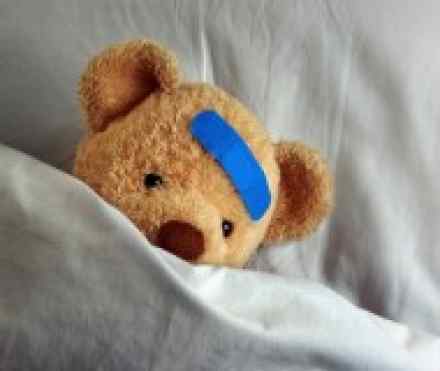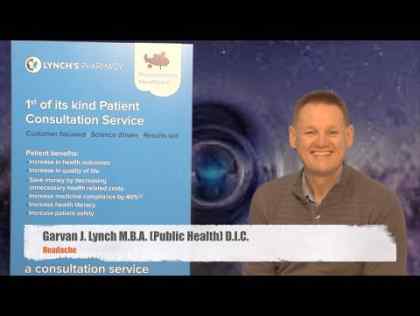
What is it?
- Headaches in children are common and are usually not serious. Like adults, children can develop migraines, chronic daily headaches or stress-related (tension) headaches, although their symptoms may be different.
- In some cases, headaches in children are caused by an infection, high levels of stress or anxiety, or minor head trauma. That's why it's important to pay attention to your child's headache symptoms and to consult a doctor if the headache worsens or occurs frequently. Headaches in children can usually be treated with over-the-counter pain medications and other lifestyle and home measures.
Symptoms
Children get the same types of headaches that adults do, although their symptoms may be different.
Migraine
Migraines can cause:
- Head pain
- Nausea
- Vomiting
- Abdominal pain
- Extreme sensitivity to light and sound
Even infants can have migraines. A child who's too young to tell you what's wrong may cry and hold his or her head to indicate severe pain. Migraines in children may last an hour or more.
Tension-type headache
Often, stress related, tension-type headaches feature a pressing tightness that occurs on both sides of the head. They can last from 30 minutes to several days.
Chronic daily headache
Both migraines and tension-type headaches can begin happening more frequently. If your child has headaches more than 15 days a month for more than three months, doctors call this a "chronic daily headache." This problem can occur when your child takes pain medications — even the nonprescription variety — too frequently.
Cluster headache
This is the least common type of headache in children. It's usually disabling and involves a sharp, stabbing pain on one side of the head that lasts less than three hours.
Causes
A number of factors, singly or in combination, can make your child headache-prone. These factors include:
- Genetic predisposition. Headaches, particularly migraines, tend to run in families. If you have a family history of migraines, your child will have a higher risk of getting them too.
- Head trauma. Accidental bumps and bruises can cause headaches. Although most head injuries are minor, seek medical attention right away if your child falls hard on his or her head. Also contact a doctor if your child has a steadily worsening head pain after a head injury.
- Illness and infection. Headache is a frequent symptom of many common childhood illnesses. Ear infections, sinus infections, colds and flu are often accompanied by headache.
- Environmental factors. Conditions in the environment, including weather changes, can cause headaches.
- Emotional factors. High levels of stress and anxiety — often triggered by problems with peers, teachers or parents — can play a role in many children's headaches. Children with depression may complain of headaches, particularly if they have trouble recognizing feelings of sadness and loneliness.
- Certain foods and beverages. The food additive monosodium glutamate (MSG), found in such foods as bacon, bologna and hot dogs, has been known to trigger headaches. Also, caffeine, which is in soda, chocolate, coffee and tea, can cause headaches.
Risk factors
Any child can develop headaches, but they're more common in:
- Children older than 10
- Boys before they reach puberty
- Girls after they reach puberty
- Children who have a family history of headaches or migraines
Diagnosis
The causes of most headaches in children can be found with a little detective work. Your doctor asks you and your child to describe the headaches in detail, to see if there's a pattern or a common trigger. The doctor also performs a physical exam and conducts a neurological exam, which checks for any problems with movement, coordination or sensation.
Blood tests, imaging scans and other evaluations are occasionally needed to pinpoint a diagnosis or to rule out other medical conditions that could be causing the headaches. These tests may include:
- Computerized tomography (CT). This imaging procedure uses a series of computer-directed X-rays that provide a cross-sectional view of your child's brain. This helps doctors diagnose tumors, infections and other possible medical problems that may be causing headaches.
- Magnetic resonance imaging (MRI). MRIs use radio waves and a powerful magnet to produce very detailed views of your brain. MRI scans help doctors diagnose tumors, strokes, aneurysms, neurological diseases and other brain abnormalities. An MRI can also be used to examine the blood vessels that supply the brain.
- Spinal tap (lumbar puncture). If your doctor suspects that an underlying condition, such as bacterial or viral meningitis, is the cause of your child's headaches, he or she may recommend a spinal tap (lumbar puncture). In this procedure, a thin needle is inserted between two vertebrae in the lower back to extract a sample of cerebrospinal fluid (CSF) for laboratory analysis.
- Psychological evaluation. Busy schedules, anxiety and high expectations are frequently associated with all types of childhood headaches. Some children benefit from working with a psychologist to learn biofeedback and relaxation therapy.
References:
http://emedicine.medscape.com/article/2110861-overview
http://www.headaches.org/headaches-in-children/
http://kidshealth.org/en/parents/headache.html
http://www.nhs.uk/Livewell/headaches/Pages/Headachesinchildren.aspx
http://www.achenet.org/resources/headaches_in_children/
http://www.achenet.org/resources/headaches_in_kids_what_parents_can_do_to_help/


